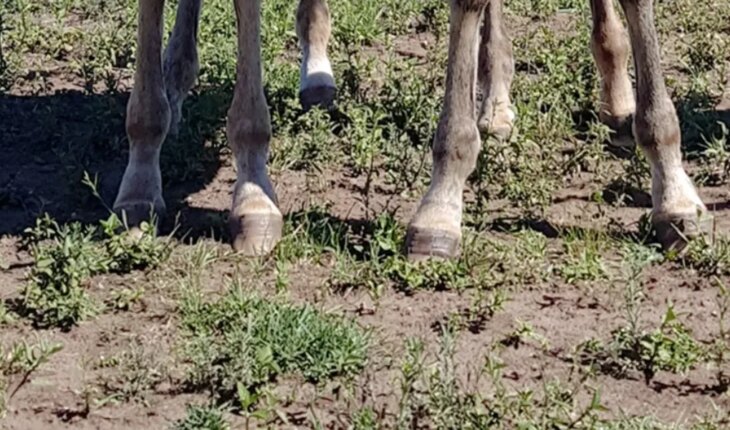For the first time in the history of cloning, the birth of a horse genetically identical to the specimen that gave rise to it, although of different sexes, was recorded. How is this possible? According to Argentine scientists published in the journal PLOS ONE, the reason was due to a spontaneous loss of the Y chromosome, very possibly due to an unforeseen situation of stress that faced the culture of the tissue to obtain the DNA of the cells of the male that was cloned. But that does not take away from him, they say, his clone quality.”A clone is an individual with the same genome as another, which is generated from asexual reproduction and originates from a single cell. The mare we are talking about absolutely falls into that whole definition; It does not have a different genome, but the absence of a partGabriel Vichera, co-founder and scientific director of Kheiron Biotech, the laboratory in which the procedure was performed, told CyTA-Leloir Agency. He added: “The genetic study of filiation that we carried out in the Rural Society gave that the mare is equal to the individual from which it was conceived and also to its twin, a foal that was born next to her“. This is how scientists went from initial disbelief to certainty and understood that they were facing a clone with sex change. Despite working in the area for nearly 20 years, Vichera acknowledged that he had never heard or read anything similar. “It’s really very unusual. From what happened we searched literature on the subject and found isolated cases in mice, wolves and dogs. But there is no history in horsesIn 1996, Dolly the sheep became the first mammal cloned from an adult cell. Its birth was possible from a technique called somatic cell nuclear transfer (TNCS), which consists of taking a cell from the body of the animal that wants to replicate and fusing it with an egg from another specimen that previously removed the nucleus. In the laboratory, it is possible to reprogram this egg in such a way that an in vitro embryo is generated without the need for fertilization, which is then implanted in the womb of an adult female (different from the one that provided the egg). The same TNCS technique is used by Vichera and his colleagues at Kheiron to clone horses, especially large polo stars. And the one that gave rise to these clones of different sexes. To understand what happened, the researchers conducted different studies and concluded that it was due to a loss of the Y chromosome.All mammals have two sex chromosomes (X and Y) whose combination is what determines biological sex. Females have two X (XX) chromosomes in their cells, while males have one X and one Y (XY). “Both phenotype [apariencia externa] as the genotype [configuración genética] of the mare correspond to those of a female. But instead of being XX it is X0 (zero). This loss of the Y chromosome in the horse, as in the human, gives a viable individual.” Vichera explained.We believe that the loss must have occurred in the culture of the tissue of the original animal, although in the analyzes we did we could not detect that this was the case. We did know that these cells were not in adequate conditions in terms of temperature and atmosphere, something that can generate stress to a cell culture and produce variability in chromosomal composition.” added the specialist. Today the clone mare is two years old and at first glance it is perfectly normal. Only in 2022 could she be able to have ultrasounds to evaluate her sexual organs, because before she was too young. “We verify that she has a uterus and ovaries, although for her age these are not sufficiently developed. We have to wait and see how they evolve over time, but we assume that it may be infertile by conventional means of sexual reproduction.“, specified the former CONICET researcher who left his position to found the company in which he has been working since 2011.Si although in this case the loss of the Y chromosome was spontaneous and it is still not clear why it occurred, in the paper the researchers propose that it may be a thread to pull to go further: “In horses the possibility of making a sex change through TNCS offers great potential for the preservation of endangered species, the development of new breeding techniques, and sporting purposes.” they wrote. Vichera, who already has more than 300 horse clones to his credit, added: “El 80% of the horses we clone in Kheiron They are for playing polo, a sport in which mares are more sought after because they are more docile. In fact, many polo players say they would love to have a female clone of their ‘supercrack’ horses to see if their performance is better.“, he graphed. Although he clarified that at the moment they are not investigating it, the specialist believes that if they propose it, they could achieve it. “If a client comes willing to specifically fund the sex change search, we can do it. For now it is not a priority because it implies extra work to what we do to obtain a normal clone and ours is a production laboratory, commercial, with a small line of research. If we were 100% research, surely we were already doing it” he said.
First case of sex modification reported in cloned horses
February 27, 2023 |





